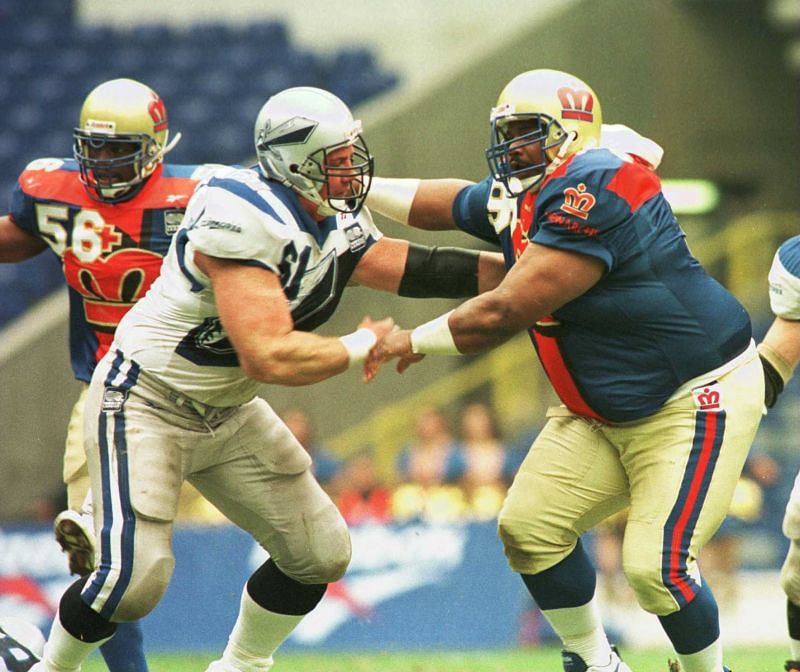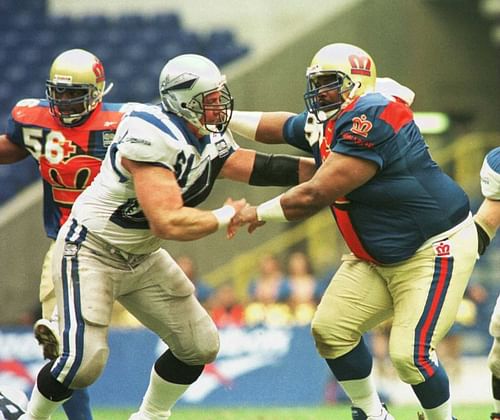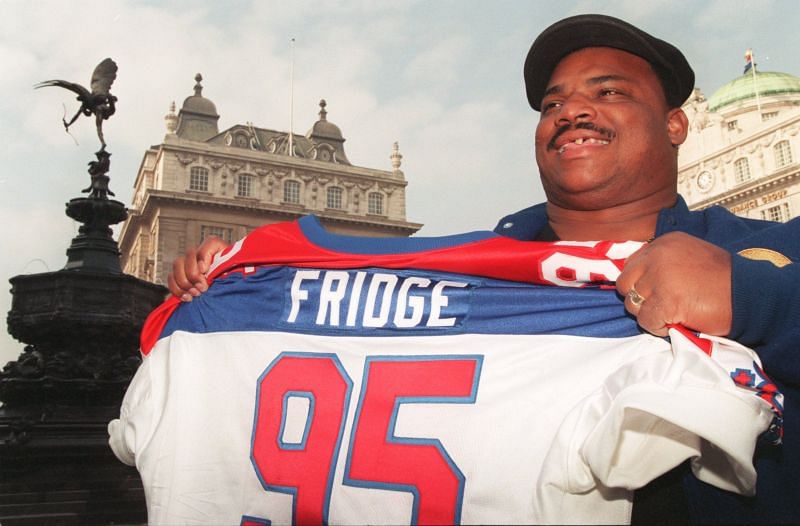
NFL: Why did NFL Europe fail?

A subject that's close to my heart: What exactly went wrong with NFL Europe?
As a European, I can't begin this article focusing on the negatives. NFL Europe, for those of us on this side of the pond who love the game, was a success in many ways (It really was!).
So before we dive into what exactly caused its eventual downfall, let's take a look at the league's history on the continent and a few of the things that were great about it.
Background: It's important to mention that NFL Europe began as the World League of American Football. The WLAF operated from 1991 to 1992 and included six US teams, one Canadian team and three European teams (Barcelona Dragons, London Monarchs and Frankfurt Galaxy).
The WLAF vanished from our screens in 1993 and 1994 but returned as the World League in 1995, this time featuring just six European teams (the aforementioned three, plus Rheine Fire, Amsterdam Admirals and Scottish Claymores).
The World League was not actually rebranded as 'NFL Europe League' until 1998. It survived a further nine years, but the ambitious project was (to my complete dismay as a child) quashed in 1997.
We will come on to what led to its eventual disbandment, but first let's take a look at some of its positives:
NFL Europe worked as a B-league and helped nurture some truly great talent

Having another league helped the NFL bring through some great players and coaches; many of whom have fond memories of their European experience.
Not 'nobodies' either; we are talking household names here: New Orleans Saints head coach Sean Payton (Leicester Panthers) and Carolina Panthers QB Jake Delhomme (Amsterdam Admirals and Frankfurt Galaxy), for example.
Having a league across the Atlantic also provided college football players more of an opportunity to play the game they loved.
Many American kids dream of playing football, and, sure, they dream of doing it in the NFL. But that's not always an option if you don't have the required talent. At least having a competition over here gave kids a second chance to hit the turf in front of a packed stadium. There is a lot to be said for that. It's what playing the game is all about.
The lack of a decent proving ground/B-league (post-College) is something that many reputable backroom figures in the NFL still feel needs addressing:
“We’ve reached a point where we really should be looking more at a developmental league, and I really expect that to begin here in the next year or so,” Dallas Cowboys executive vice president Stephen Jones, a member of the league’s competition committee, told CBS Sports. “We lost a lot of money on NFL Europe, but there were a lot of things the league did well and for all of those reasons – coaches, officiating, players, quarterbacks in particular – it’s something we really do need to be looking at and studying. The time might be right to do it.”
If you need any more proof that NFL Europe was a decent breeding ground for talent, look no further than Super Bowl-winning QB and MVP Kurt Warner and the NFL's All-time greatest kicker, Adam Vinatieri.
Warner signed with the St. Louis Rams in 1998 and was immediately shipped off to Europe to play for the Amsterdam Admirals. He only played one year in the Netherlands but did lead the league in passing yards and touchdowns. That comes as little surprise when one considers his catalog of success after he returned to the Rams.
"I just loved my experience in Europe. I think it was so vital to my career," said Kurt Warner.
Kicker Adam Vinatieri also perfected his trade in Europe with the Amsterdam Admirals.
The former Patriot returned to the NFL in 1996 and went on to win four Super Bowl rings as well as breaking Morten Anderson's record for the most career points (2,673) scored by an NFL player.
“For me, it helped because it gave me the confidence going to the NFL,” he said. “It was almost like having a fifth year (of college),” said Adam Vinatieri.
It would be unfair to write the project off as a total failure when there are success stories such as the one just mentioned above. Unfortunately, NFL Europe's success was short-lived.
What went wrong with NFL Europe, and why was it disbanded?

What I remember from my time in Amsterdam is the fans. I remember people coming out getting excited about the sport," reminisced Kurt Warner.
In 1996, when William 'Refrigerator' Perry arrived to play for the Monarchs, fans were excited.
It really did feel that the game was gaining traction on the continent. Sure, we didn't know much about many of the other players, but the Fridge was here at least. So what went wrong?
Well, there are two major reasons behind the failure of NFL Europe:
#1 The quality of NFL Europe just couldn't compare to the NFL, and the fans worked that out quickly
Like our American cousins, European fans are fussy. There is an array of great sport on offer in the continent.
If you want to watch some of the very best football (soccer), tennis, golf, motor racing, cricket, rugby, et al, it's all available locally, or at the click of a button. The level of play and competition in NFL Europe just couldn't match the level we were seeing late at night on TV over in the United States.
The best talent in NFL Europe would always return to the NFL (USA), and the old horses that arrived to boost interest and sales (such as William 'the Fridge' Perry) were unable to reproduce the form they were famed for.
As a result, NFL fans eventually returned to their favorite American teams. They wanted to watch the best football on offer, and this was not what they got when they sat down to watch NFL Europe. One just could not compare the Scottish Claymores to Jerry Rice and the San Francisco 49ers. It's really that simple.
As a point of reference -- and I mean no disrespect to MLS, which improves year on year -- it was a bit like tuning in to watch a lower-tier MLS game when you could have been watching the Champions League (in European football terms).
The quality just wasn't there in the end, and, as we all know, if the product isn't good enough, eventually your business will fail. And that's exactly what happened with NFL Europe.
#2 NFL-Europe hemorrhaged money for the entirety of its existence

Once fans cottoned onto NFL Europe's inferior product, the stadiums began to empty, and several teams decided to call it a day.
Over a 16-year period, the upkeep of NFL Europe resulted in a $400-million loss for the league.
Money talks. To have continued with the European game simply wouldn't have been economically viable. Ultimately, that is why the league was canceled.
NFL Europe hemorrhaged money from the cradle to the grave. It was really fun while it lasted though.